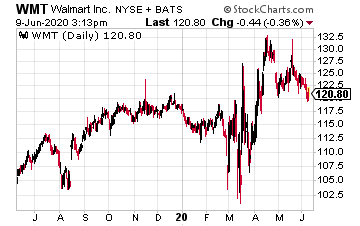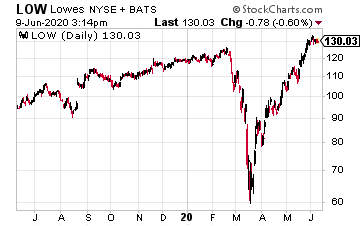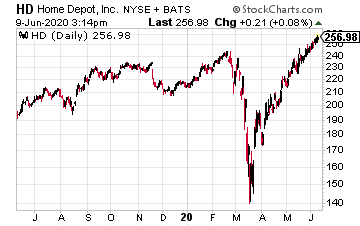The shutdowns ordered by city and state officials had the perverse effect of labeling brick-and-mortar businesses as either essential or non-essential. An essential business designation allowed those businesses to remain open. Non-essential companies were forced to close their doors; those companies whose employees could not do their jobs from home soon found they were furloughing or laying off employees and missing out on up to three months of revenue.
Now that the states are beginning to reopen, much of the focus is on when and whether “non-essential” businesses will get back to business, allowing workers to get back to their “non-essential” jobs and earn some “non-essential” paychecks. But I digress.
14.9% Payouts Up For Grabs! [ad]
Not only were the companies with “essential” designations able to stay open, but they also picked up the commerce that would have gone to closed businesses. Three months of shopping at a store a shopper may not have visited previously changed their shopping habits. In many cases, for many individuals, this new shopping habit has already become permanent.
Here are three essential retail companies that will stay top of mind for consumers and continue to grow their dividends.
Walmart, Inc. (WMT) stores became the place to shop. Offering everything from groceries, to clothing, to mobile phones, to sporting goods, consumers knew they could find what they wanted or needed at their nearby Walmart. (And with 11,500 stores, most people have a nearby Walmart.)
Not only that, but Walmart’s online retail sales business is second only to Amazon. On the dividend front, the Walmart payout has grown for 47 consecutive years.
Every February, the company declares a year’s worth of dividends, giving investors the confidence they will receive dividends for the next four quarters.
The Walmart share price did not participate in the torrid start-of-June stock market rally; in fact, the share value peaked on May 19 and has dropped by $8.00 from that peak.
It’s a good time for long-term investors to pick up shares.
In contrast to the lackluster stock performance of Walmart, the Lowe’s Companies (LOW) share price has doubled from its mid-March low.
Individuals under stay-at-home orders did go out to home improvement stores like Lowe’s to buy materials for home improvement projects. Getting those home projects done became a top priority for many who had little else to do.
Lowe’s fiscal first quarter ended on May 1, so investors got to see how the company did through the first two months of the shutdown. The results were outstanding. Revenues were up 11.2% compared to the 2019 first quarter, and adjusted earnings per share were up 45%.
On the dividend front, Lowe’s has increased its payout for 56 straight years, growing the dividend by 20% per year for the last decade.
The Home Depot (HD) story is parallel to Lowe’s. These two companies dominate the home improvement retail space. Home Depot is the larger company, with a $265 billion market cap, compared to $97 billion for Lowe’s.
Both companies have about 2,200 retail stores.
And like Lowe’s, Home Depot also closed its fiscal first quarter at the start of May. For the quarter, revenues were up 7.1% compared to the same period in 2019. Net income of $2.08 per share was down from $2.27, quarter over quarter. However, Home Depot took a pre-tax expense of $850 million or $0.60 per share for the quarter. The expense covered the pandemic-related employee support costs. Factor the expense back into profits, and net income was up 18%.
The Home Depot dividend has increased for 11 straight years, at a 20% compound annual growth rate.








